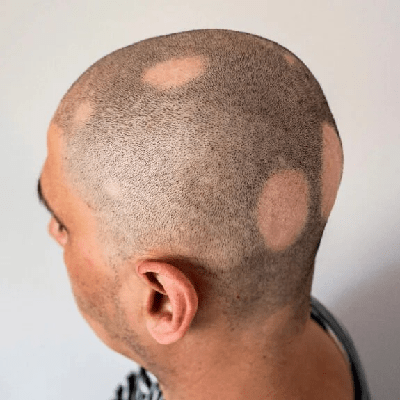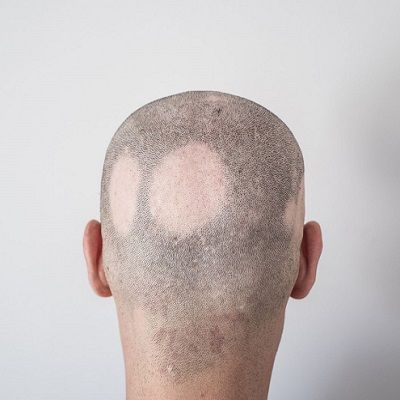
Hair plays a huge part in individuals’ lives, both practically and aesthetically. Practically, hair fills in as a defensive obstruction, especially on the scalp, protecting the skin from hurtful UV radiation and ecological components. It manages the internal heat level by protecting the head. However, balding, or alopecia, can happen because of multiple factors. Normal elements incorporate hereditary qualities, hormonal changes, ailments, prescriptions, and maturing. Androgenetic Alopecia, otherwise called male-example or female-design sparseness, is the most well-known hereditary reason for balding. Hormonal changes, like those during pregnancy, menopause, or thyroid issues, can likewise contribute. However, most people are unaware of the cause and treatment of this condition. Because they lack the main information like the Difference Between Non-Scarring and Scarring Alopecia.
What Is Alopecia?
Alopecia is a clinical term that depicts the incomplete or complete loss of hair from the region of the body where it commonly develops. It is portrayed by the shortfall of hair or perceptible diminishing of the hair, and it can happen on the scalp, eyebrows, eyelashes, or different sites of the body. Alopecia can result from various causes, including hereditary qualities, hormonal changes, immune system problems, ailments, meds, and natural variables.
There are various kinds of alopecia, each with its own qualities and basic variables, and it tends to be brief or extremely durable. Alopecia can fundamentally affect an individual’s actual appearance and profound prosperity, and treatment choices are accessible depending upon the particular kind and reason for balding.
Types of Alopecia:
There are certain different Types of Alopecia. However, the two main types are scarring and non-scarring alopecia.
Scarring Alopecia:
Scarring alopecia, otherwise called cicatricial alopecia, is a sort of going bald described by the long-lasting obliteration and supplanting of hair follicles with scar tissue. It happens because of different basic causes, like irritation, immune system conditions, diseases, consumption, or injury to the hair follicles. These outcomes in noticeable areas of sparseness with changes in the skin surface, including redness, scaling, and scarring.
Hair follicle Damage:
Scarring alopecia is described by the extremely durable harm and annihilation of hair follicles. Scar tissue replaces the ordinary hair follicles, keeping hair from regrowing.
Scar Tissue:
The trademark component of this condition is the presence of scar tissue inside the areas of going bald. This scar tissue can result from different causes, like irritation, immune system conditions, diseases, consumption, or actual injury to the hair follicles.
Irreversible:
Going bald in it is ordinarily irreversible in light of the fact that the hair follicles are unsalvageably harmed. When scar tissue structures, it can’t uphold hair development.
Skin Changes:
The skin in regions impacted by scarring alopecia frequently shows noticeable changes, including redness, scaling, and scarring.
Non-Scarring Alopecia:
Non-scarring alopecia, likewise alluded to as non-cicatricial alopecia, is a class of going bald where the hair follicles are not forever harmed by scar tissue. All things being equal, going bald happens because of elements that disturb the typical hair development cycle or influence the hair shaft. Normal reasons for non-scarring alopecia incorporate hereditary qualities. Like male-example or female-pattern sparseness), hormonal changes, stress, dietary lacks, and certain ailments.
Hair Follicle Capability:
In non-scarring alopecia, the hair follicles themselves are damaged temporarily. They might be impacted by elements like hormonal changes, stress, or wholesome lacks. However, they are as yet fit for supporting hair development.
No Scar Tissue:
It does not include the arrangement of scar tissue in the space of going bald. The hair follicles move in a resting stage. However, they stay viable.
Potential for Regrowth:
Non-scarring alopecia frequently presents as reversible going bald. When the doctor finds out the basic reason and treats it, new hair can regrow from the impacted follicles.
Skin Appearance:
The skin in areas of non-scarring alopecia normally doesn’t show huge changes in surface or the presence of scar tissue. It might seem typical or somewhat impacted by the fundamental reason.
Difference Between Both:
The vital differentiation between these two kinds of alopecia is the potential for hair regrowth. Scarring alopecia brings about long-lasting balding because of permanent harm to the hair follicles and the presence of scar tissue, while non-scarring alopecia frequently takes into account the recuperation of hair development when the doctor treats or settles the underlying elements. Analysis and treatment approaches vary essentially founded on whether the condition is scarring or non-scarring alopecia.
Treatment for Alopecia:
Contingent upon the kind of alopecia, the doctors may recommend prescriptions. For instance, minoxidil (Rogaine) is usually helpful for non-cicatricial alopecia to advance hair development. However, for scarring alopecia, the growth of hair follicles is permanently restricted. The doctor suggests Hair Transplantation.
Book a Consultation!
If you want to know more about the Difference Between Non-Scarring and Scarring Alopecia. You can consult our doctors at Dynamic Clinic in Dubai. They will completely guide you and suggest an appropriate treatment plan. You only have to fulfill the requirements of the online consultation form and schedule your appointment.











